The best snow shovels in 2024, tried and tested
Content is created by CNN Underscored’s team of editors who work independently from the CNN newsroom. When you buy through links on our site, CNN and its syndication partners may earn a commission. Learn more
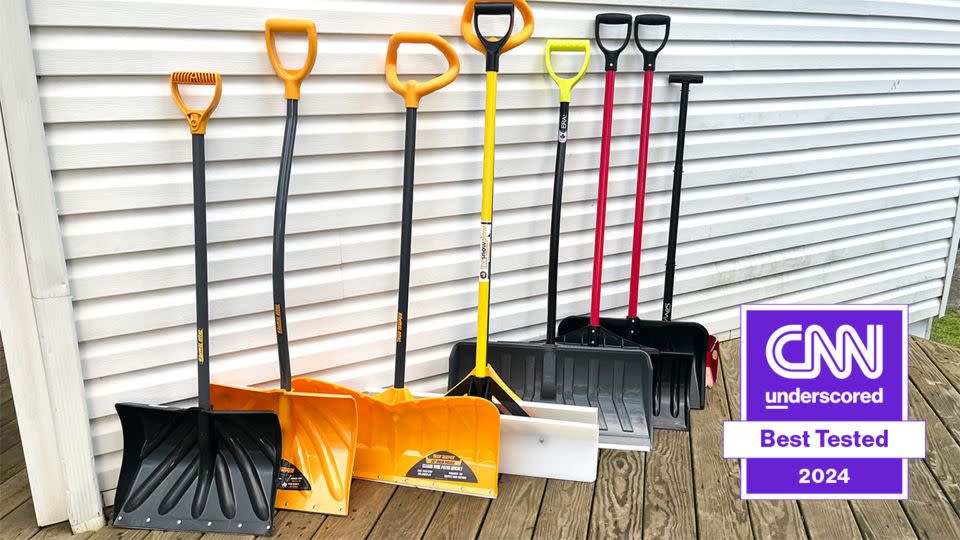
People are always talking about reinventing the wheel, but there’s another simple tool that’s quietly been getting a major upgrade: that glorified lever, the shovel. Trying to select a snow shovel these days is a much more thoughtful process than years past, with considerations like plastic versus metal, handle height and shape, ergonomics and whether you’re going to scoop the snow or just push it around all factoring into the final decision.
This was all a revelation to me. I grew up using a wood-handled aluminum beast with edges that had curled up from years of abuse. I can still hear the tooth-gritting scrape it made on the pavement. When I bought my own home five years ago, snow removal was an afterthought, so much so that I was using a secondhand plastic shovel one of my neighbors had been throwing out. The first big snowstorm we got, I realized my mistake. Or rather, I felt it the next day. This was my first house with sidewalks, plus a substantial deck, and that cheap secondhand shovel was not going to cut it.
To help you find the best shovel so you won’t be as sore as I was that day, we got seven of the top snow shovels on the market to test head-to-head. Here are the three that stood out.
True Temper 18-Inch Ergonomic Mountain Mover Snow Shovel
Best snow shovel
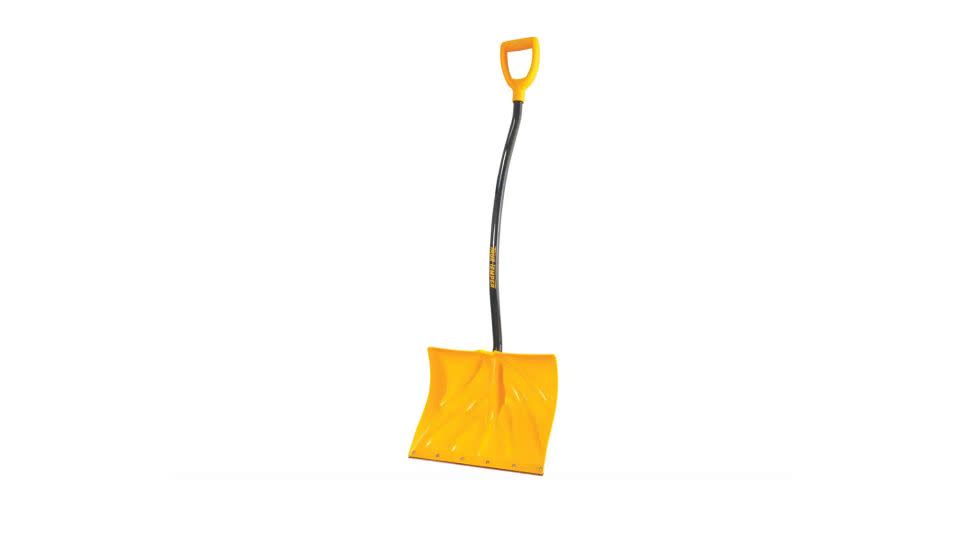
For a basic all-purpose shovel, this one checks all the boxes: It’s ergonomic, lightweight and durable; has a decent scoop capacity; and can be used on multiple surfaces. If you can only invest in one shovel, the True Temper Ergonomic Shovel, coming in under $40, is your best bet.
Bully Tools 27-Inch Poly Snow Pusher
Best pusher snow shovel
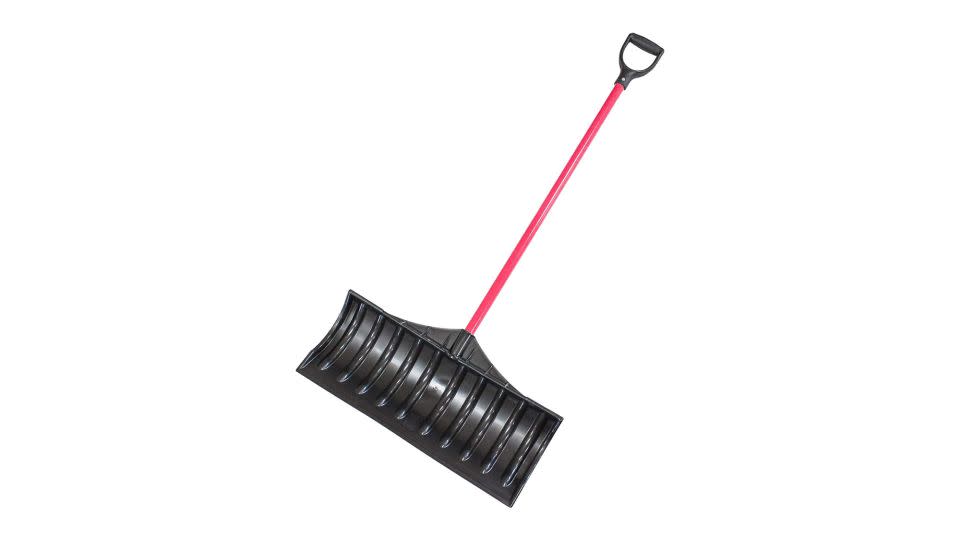
If you’re clearing large areas, this pusher gets the job done with minimal effort, thanks to its solid polypropylene design, wide blade and no-slip fiberglass handle.
Era Premium Plus Series 28-Inch XL Snow Pusher
Best snow shovel for your back
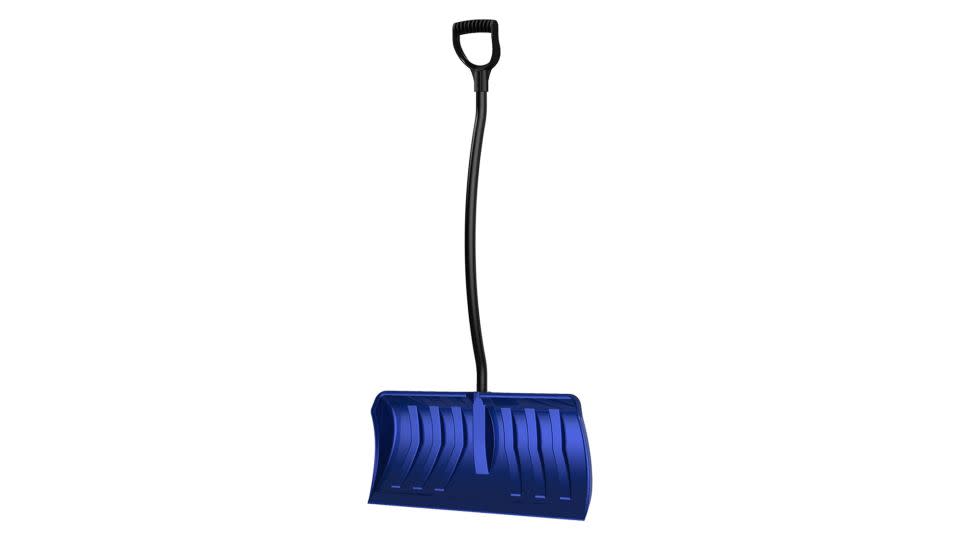
The S-shaped curve of this lightweight plastic shovel noticeably minimizes the strain on your back when lifting, and the large-capacity scoop means you get the job done faster without feeling sore the next day.
Best snow shovel: True Temper 18-Inch Ergonomic Mountain Mover Snow Shovel
$39 at The Home Depot
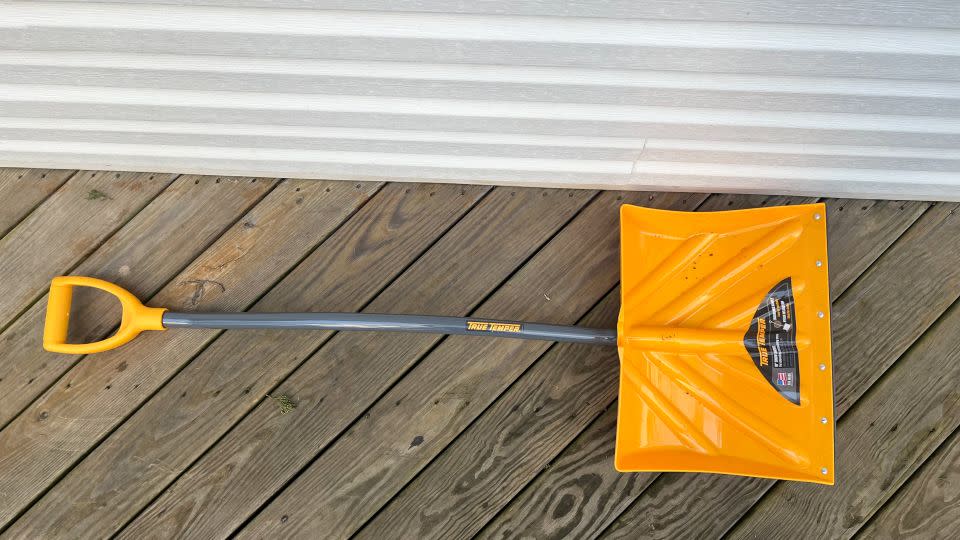
If you only get one shovel, it should be the True Temper Mountain Mover. Throughout our testing, the Mountain Mover proved to be extremely versatile, easily pushing and scooping all types of snow. There are traditionally two main types of shovels: scoopers for dense, icy snow and pushers for light, fluffy stuff. What makes the Mountain Mover so great is its hybrid design, allowing you to deal with any type of snow. If you know you only get really dense or really light snow, you might want to look into traditional scoopers and pushers, but if you get varying conditions, the Mountain Mover is the one for you. In our testing, what really made the Mountain Mover shine was its versatility. It has a narrow scoop, and while that might mean you have to do more passes to completely clear your driveway, we really appreciated how manageable the small blade felt to use. That, paired with its lightweight materials and ergonomic shaft, makes tossing snow with the Mountain Mover much easier than nearly every other shovel we tried.
Weighing in at 4 pounds, the Mountain Mover was on the lighter end of the spectrum of shovels we tested, which ranged from 3 to 7 pounds. Despite its weight, however, it still manages to live up to its name. The angle of its blade makes it possible to both push and scoop snow depending on your need. I found that even though this shovel isn’t a pusher per se, flipping it over and using the flat edge of the blade worked as well as some of the dedicated pushers we tested.
While other shovels we tried, like the DMOS, excelled in dense, wet snow but were less proficient in light, powdery stuff, the Mountain Mover’s combination of comfort, blade angle and weight made it excel at both. Admittedly, it won’t replace an ice scraper, but it is versatile enough to tackle all conditions with equal ease.
Plus, holding and using the Mountain Mover was extremely easy — even with gloves on — thanks to an elongated and oversized D-shaped handle. (Most other shovels in our tests, including others by True Temper, also have a D-shaped handle but weren’t as big and comfortable to use.) Scooping and tossing shovelfuls of snow is aided by the gently curved shaft, which relieves some of the pressure on your back. (If you’re worried about back pain and need a more ergonomic shovel, check out our pick for the best shovel for your back below.)
Another feature of the Mountain Mover we loved was its nylon wear strip at the base of the blade. Other shovels we tried have a metal strip to help cut through snow and ice, but the nylon performed just as well and was gentler, which allowed me to clear snow off a sizable wooden deck without damaging it (the strip helps prolong the life of the shovel too).
If you’re looking for a shovel that can withstand a variety of conditions and make snow shoveling less of a chore, this small but mighty shovel is worth every penny.
Best snow pusher: Bully Tools 27-Inch Poly Snow Pusher
$46 at Amazon, Bully Tools and The Home Depot
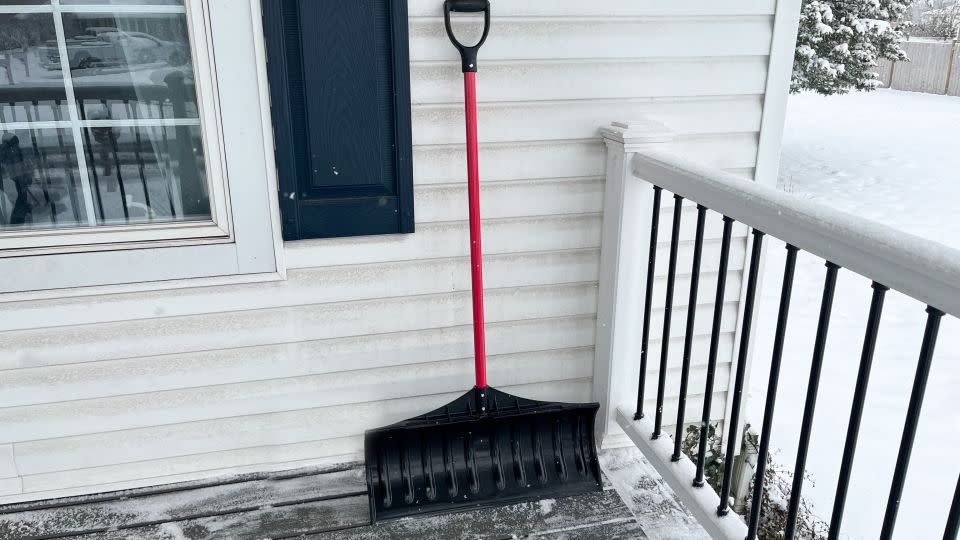
If you live in an area with high snowfall that tends to be mostly powder, you’ll want a dedicated snow pusher. Our favorite from testing was the Bully Tools 27-Inch Poly Snow Pusher, which moved large drifts with ease.
Most of the other snow pushers we tested take their design cue from snow plows and have an utterly smooth, barely curved blade. The Bully Tools, on the other hand, has more curve to cut and collect massive amounts of snow. When we tested it against the other snow pushers, we found that the Bully Tools’ design helped push more snow easily, mainly thanks to its long handle and extra-wide and thick blade. This came in handy during a storm that dropped about half a foot of light powder, which is what snow pushers are really designed for: moving bulk snow in fairly straight paths. This made it ideal for clearing my sidewalks during the storm; rather than squat, scoop and toss shovelfuls, I could simply push this beast in a straight line and watch the snow mound up, then steer it off to the side where it piled up out of the way, no lifting required. The more plow-like pushers I tested didn’t allow me to move nearly as much snow at once and felt less able to stand up to heavier loads.
It’s also made of polypropylene so strong that the company has video footage showing one of its shovels being run over by a Ford F-150 without a crack. It translates to a snow pusher that’s exceptionally strong and durable, can be used on surfaces like wood without fear of damage and will last for years. The D-grip handle also has a nonslip surface that’s a nice touch.
If you primarily get powdery snowfall, and lots of it, a pusher is probably all you need, and this one was the most heavy-duty and most adept at moving large mounds.
Best snow shovel for your back: Era Premium Plus Series 28-Inch XL Snow Pusher
$40 at Amazon or $36 at The Home Depot

Leave it to Canadians to design a great snow shovel. Of all the ergonomic shovels I tested, this one from Era’s Premium Plus line provided the most immediate relief. Using it instantaneously relieved the pressure on my lower back, even with heavy, wet snow loads. At 28 inches, the blade is as wide as many snow pushers, and such a load could cause significant discomfort if the curved handle were not assisting you. The blade is made of sturdy polypropylene that is designed to withstand temperature extremes (-25 degrees Celsius) without cracking, and there’s even a molded piece on the back of the blade so you can use your foot for some extra power, a feature we only found on this shovel. The Era also has an optional anodized metal wear strip that I found helped me clear ice and snow down to bare pavement, which the other plastic shovels we tested couldn’t do.
Despite how heavy-duty this shovel is, it was lighter at 3.5 pounds than the other all-plastic shovels we tested, which helped with maneuverability and lifting without strain. The shaft is steel, while most of the other shovels in our tests used fiberglass or other materials. I prefer the steel, which is strong enough to remain hollow, reducing the overall weight of the shovel without the risk of bending, warping or cracking.
It was surprising that this shovel, with its more gentle S-shaped curve, felt easier on my back than the other ergonomic shovels I tested (like the True Temper), which had more severe bends, but a little went a long way, and the slighter curve also makes the Era shovel easier to store. I’m also a fan of the D-shaped nonslip handle, which, apart from our overall winner, the True Temper, was the most comfortable one I used and the only other shovel handle that was shaped to accommodate snow gloves without feeling clunky.
If you always have a sore back after shoveling your driveway, consider the Era’s Premium Plus Snow Pusher. Its ergonomic design reduced stress on my own back without sacrificing performance. While this shovel can help, to really prevent back pain, read on for some tips from expert snow shovelers on how to clear snow safely.
How to shovel snow safely
Snow removal can be more than just a figurative pain. Though the most often quoted statistic — that snow shoveling accounts for some 11,500 emergency room visits annually — is from data that’s now almost 20 years old, the risk of injury is still very real. “A 10-pound shovelful of snow may produce 20 pounds of compression on your spine,” says Kevin Costello, a mechanical engineer and certified professional ergonomist (CPE) with United States Ergonomics, based in Long Island, New York. “And if you don’t use proper technique, it multiplies that.”
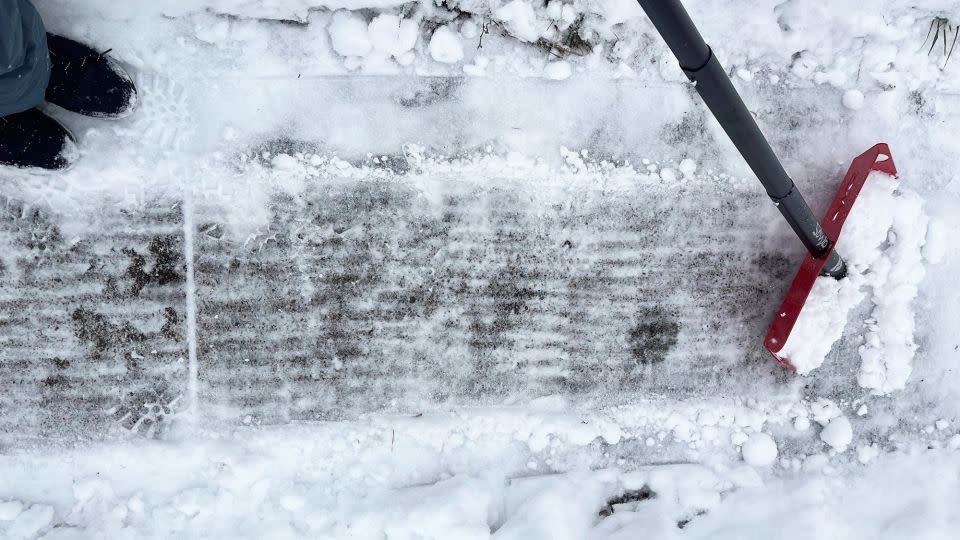
The real danger when snow shoveling isn’t muscle strain as much as it is the cardiovascular risk. There are a number of deaths attributed to snow shoveling-related heart issues each year, and shoveling snow is listed among the physical activities known to place extra stress on the heart, especially for individuals who generally aren’t active, according to research by the American Heart Association. Even the best shovel won’t help in those cases. Here’s what to keep in mind if you want to prevent heart and other snow-related injuries:
1. Warm up: Costello recommends 10 minutes of light stretching before grabbing a shovel.
2. Use proper form: When you shovel snow, you want to engage your legs, core and arms more than your back. That means bending at the knees when lifting instead of twisting your torso while also maintaining an S-shape to your spine by sticking out your butt.
3. Take a lighter load: Smaller shovelfuls may take longer to get the job done, but they’ll also lower the risk of overloading yourself. “If you’re exerting more than 60% of your strength, you’re going to fatigue pretty quickly,” Costello says. So try to take on only slightly more than half your capacity.
4. Stretch a second time: If you want to feel good the next day, do not just sit on the couch after a shovel session, Costello says, as lactic acid has built up in your muscles. It seems counterintuitive, but 10 minutes of mild stretching or even a massage helps that acid disperse and prevents next-day soreness.
Everything you need to know about snow shovels
While following the above tips can help you reduce the impact shoveling has on your body, the snow shovel you use does make a difference. There are a few key points to keep in mind if you want to reduce strain on your back, Costello says:
Shovel height: The longer the handle is, the more torque you put on your body and the more prone you are to muscle strain. A snow shovel should be roughly chest high.
Shaft shape : Curved handles are an improvement if you’re scooping and tossing snow, not just pushing it.
Blade width: Even if you’re just pushing snow, you have to be cautious. The wider the blade, the higher the force. A 24-inch blade is pretty standard and wide enough for most paths and other jobs.
Handle shape: Most people don’t think about their wrists when shoveling, but they should. A D-handle is best for helping you keep a straight wrist.
Of course, choosing a shovel is about more than just ergonomics. I was surprised to learn that the pro shovelers I spoke with tend to stick with old-school, straight-handled, scoop-type shovels. Patrick Hummel, park supervisor for Mount Washington State Park in New Hampshire, is one of them. The reason: Conditions at the summit, the highest peak in the northeastern United States and what he calls “home of the world’s worst weather,” are notoriously erratic and extreme. “That’s why we’re careful with our shovel selection and keep them shorter on the handle,” Hummel says. “A straight handle allows us to better keep our center of gravity,” which is important in gusting 40-mph winds.
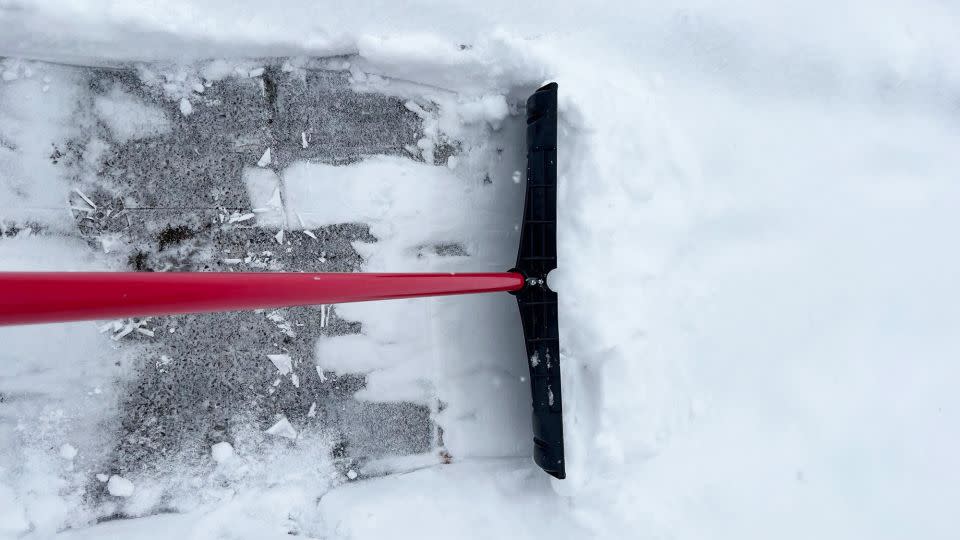
Another thing pros had in common: shovel diversity. The summit of Mount Washington gets between 20 and 25 feet of snow annually, and it’s not all light powder. Hummel and his crew have multiple styles of shovel at the ready: shorter, sturdy plastic scoop-type shovels for routine work, metal shovels when there’s frozen precipitation mixed in, and the double-handled walk-behind contraptions known as sleigh shovels or sometimes yooper scoopers (though not by Hummel) to push heavy snow drifts away from doorways. “It’s hard, at least in the northeast, to have a one-size-fits-all shovel,” Hummel says. “A lot depends on the person and setup and situation.”
After testing many, I concur. If you’re regularly shoveling different kinds of snow or clearing different surfaces, it pays to invest in multiple shovels. If you’re more of a snow shoveling hobbyist who wants to take your chances, then choose the shovel that seems to best suit your priorities, whether those are budget, durability, comfort or another factor.
Types of snow shovels
If you think a snow shovel is a snow shovel, I’ve got news for you: There are at least four different major kinds of snow shovels.
Scoops: These are the classic snow shovels designed to lift and toss. They have a somewhat smaller, more curved blade and are great for digging out parking spots or clearing small paths.
Snow pushers or snow rollers: These snow shovels have larger, flatter blades designed to push rather than scoop snow, so they eliminate the need to lift and are best for clearing large areas. Some have wheels.
Hybrid shovels: These combine elements of both pushers and scoops.
Sleigh shovels or yooper scoopers. These devices have what looks like the scoop of an excavator attached to a bar that loops around so you can grip it with both hands. They are the largest kind of shovel and are best if you live somewhere that gets a high volume of powdery snow.
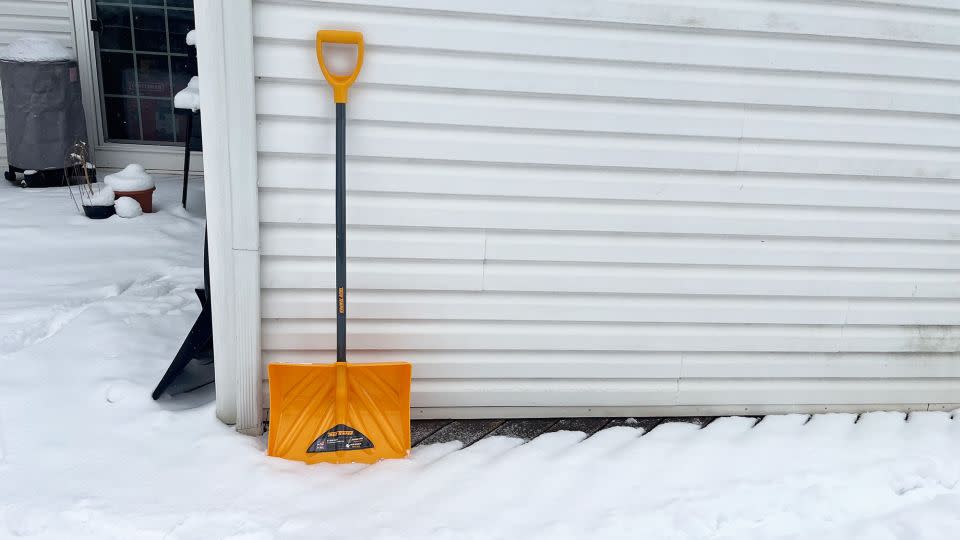
How we tested
I am a lifelong East Coaster who has been shoveling snow for three decades and has done so through multiple snowstorms, blizzards, a Snowmageddon or two and at least one polar vortex. Nevertheless, I know conditions vary geographically, so to select and evaluate our pool of test shovels, I spoke to professionals with plenty of shoveling experience in different US climates. In addition to Hummel and Costello, I consulted with Ranyon d’Arge, head of park and pipe operations at Jackson Hole Mountain Resort in Wyoming. Here is a full breakdown of how I tested the shovels:
Construction
Assembly: Some shovels come pre-assembled or you can request the store you purchase them from to handle it, but some came with minimal assembly required and one required power tools to assemble.
Design and materials: Each shovel was assessed visually on the quality of materials and construction, both before and after use.
Ergonomics and weight: We rated shovels based on not only how efficient they were at snow removal but how difficult they were to use and how much strain using them put on the back and other body parts. Grip comfort was also assessed.
Performance
Efficiency: Simply put, this is how good of a job the shovel did at snow removal under two very different conditions: a light, fluffy snow and a dense, wet snow over ice. We rated how easy it was to clear snow under each condition and how long it took to clear a designated area.
Versatility: Each shovel was used on sidewalks, a concrete driveway, a gravel driveway and a wooden deck, and rated on how well it performed on each surface.
Other snow shovels we tested
True Temper 26-Inch Snow Shovel and Pusher
$28 at The Home Depot
This hybrid model from True Temper leans toward pusher more than scoop and was the largest and heaviest shovel we tested, which isn’t ideal for the average homeowner, especially when the handle doesn’t provide any ergonomic relief.
JM Enterprises The Snowplow 30-Inch Original Snow Pusher
$60 at JM Enterprises or $90 $79 at Amazon
While this design was said to revolutionize snow removal, I did not find that to be the case. It works purely for pushing light drifts, has no depth or grooves for scooping snow at all and was the only shovel we tested that required power tools to assemble.
True Temper 30-Inch Industrial-Grade Snow Pusher
$60 at The Home Depot
This has a similar design to the Snowplow, which means it wasn’t versatile when it came to different kinds of snow and is heavier overall. I did find the handle more ergonomic and easy to push with a double-handed grip, but if I only buy one shovel, this isn’t going to be it.
DMOS Stealth Shovel
Currently unavailable
This ultra-portable shovel was a stand-out in our testing. It was incredibly durable, cut through icy and dense snow with ease and is a fantastic shovel to keep in your car just in case you need to dig yourself out of a snowbank. However, it isn’t available for purchase anywhere online, so we can’t recommend it.
Note: The prices above reflect the retailers' listed price at the time of publication.
For more CNN news and newsletters create an account at CNN.com

